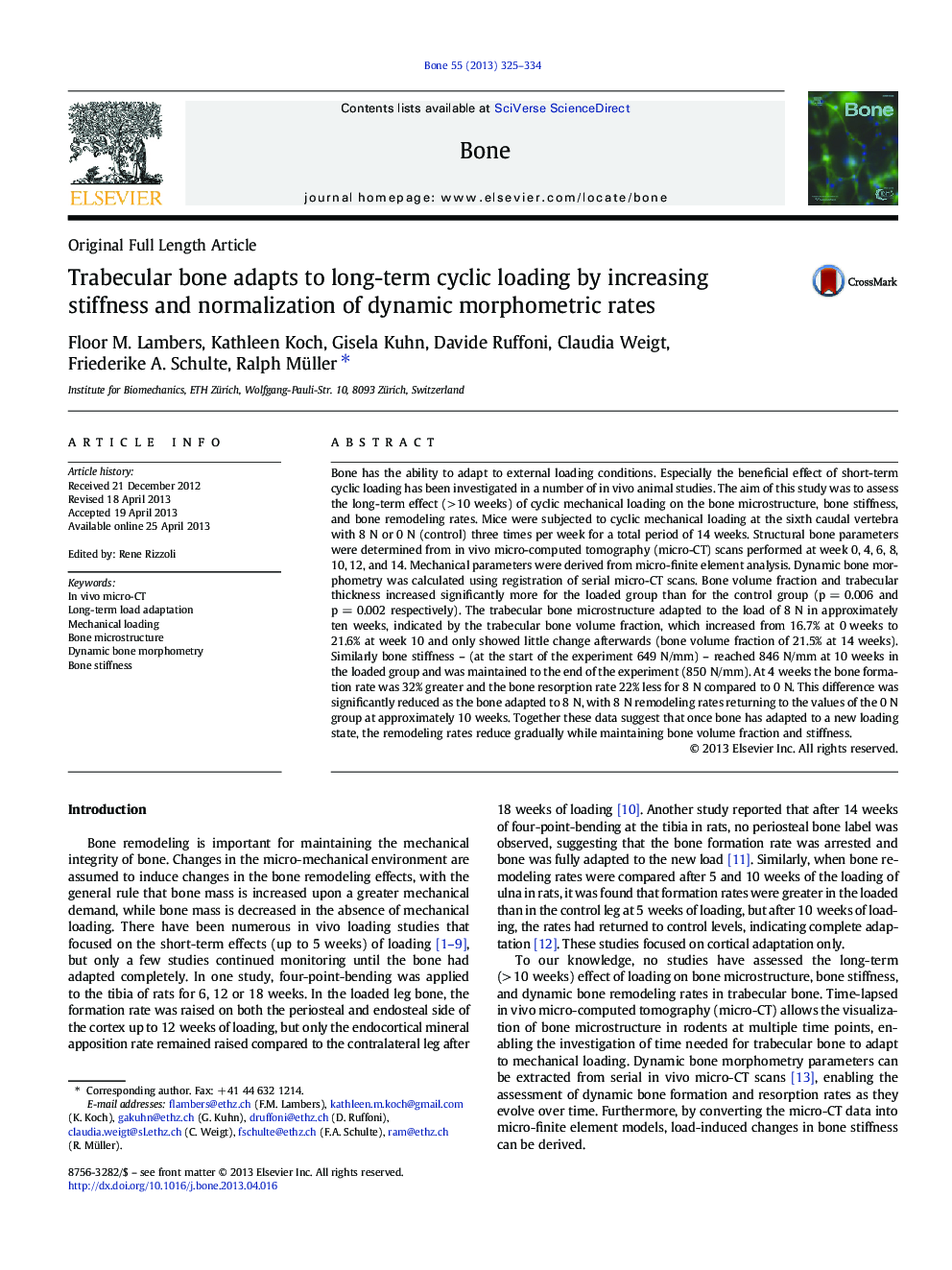| Article ID | Journal | Published Year | Pages | File Type |
|---|---|---|---|---|
| 2779222 | Bone | 2013 | 10 Pages |
•Long-term effect of cyclic mechanical loading was assessed in murine trabecular bone.•Bone microstructure adapted to 8 N in ten weeks.•Bone stiffness peaked at ten weeks and remained constant until the end of experiment.•After adaptation, bone remodeling rates gradually approached control levels.
Bone has the ability to adapt to external loading conditions. Especially the beneficial effect of short-term cyclic loading has been investigated in a number of in vivo animal studies. The aim of this study was to assess the long-term effect (> 10 weeks) of cyclic mechanical loading on the bone microstructure, bone stiffness, and bone remodeling rates. Mice were subjected to cyclic mechanical loading at the sixth caudal vertebra with 8 N or 0 N (control) three times per week for a total period of 14 weeks. Structural bone parameters were determined from in vivo micro-computed tomography (micro-CT) scans performed at week 0, 4, 6, 8, 10, 12, and 14. Mechanical parameters were derived from micro-finite element analysis. Dynamic bone morphometry was calculated using registration of serial micro-CT scans. Bone volume fraction and trabecular thickness increased significantly more for the loaded group than for the control group (p = 0.006 and p = 0.002 respectively). The trabecular bone microstructure adapted to the load of 8 N in approximately ten weeks, indicated by the trabecular bone volume fraction, which increased from 16.7% at 0 weeks to 21.6% at week 10 and only showed little change afterwards (bone volume fraction of 21.5% at 14 weeks). Similarly bone stiffness – (at the start of the experiment 649 N/mm) – reached 846 N/mm at 10 weeks in the loaded group and was maintained to the end of the experiment (850 N/mm). At 4 weeks the bone formation rate was 32% greater and the bone resorption rate 22% less for 8 N compared to 0 N. This difference was significantly reduced as the bone adapted to 8 N, with 8 N remodeling rates returning to the values of the 0 N group at approximately 10 weeks. Together these data suggest that once bone has adapted to a new loading state, the remodeling rates reduce gradually while maintaining bone volume fraction and stiffness.
